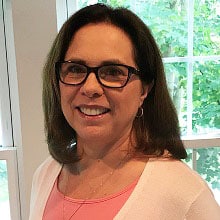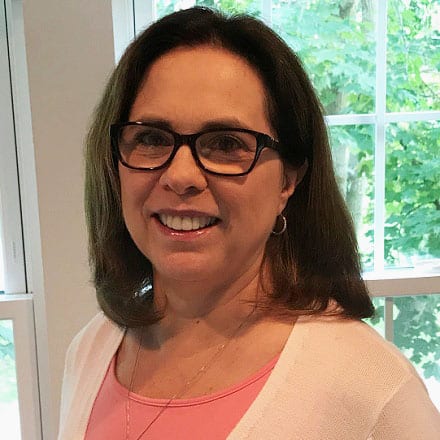Inside Angle
From 3M Health Information Systems
Time traveling in health care
I just finished reading a book titled “All Our Wrong Todays” by Elan Mastai. It is the story of a young, single man in his early 30s who is pretty dysfunctional in a parallel world to ours. While his father is considered a genius in the field of time travel, Tom, at the age of 34, is working for an advertising agency that specializes in perceptional marketing. Like other jobs he has had in the past, Tom can’t seem to hold onto the job very long. In an effort to help him along, his father gives him a job being the understudy to a very capable time traveler. Things go wrong and Tom ends up time traveling to our current world from his parallel world. Shocked by how we live and the lack of technology compared to his world, he goes about fixing the wrongs he created by traveling in time. In Tom’s world there are solar-powered flying cars (no gas stations), space vacations, nutritional gel food that is mixed with color, flavor and texture to your liking while meeting your specific nutritional requirements (no grocery stores, fast food joints). There are no manual jobs like a plumber because in Tom’s world, there are organic waste module serviced by drones, which are owned by an international conglomerate that maintains the technology. If you like this sort of thing, it is a recommended read.
It got me thinking about health care and what my version of the healthcare future would look like. Travel with me, if you will, to a time just two years in the future. Yes, it can happen that fast or faster. Much of what is in my future healthcare world is already here, just not all in one spot yet.
A FUTURE HEALTHCARE ENCOUNTER
The year is 2019 and I have developed hearing loss (probably due to the music of my youth) and instead of a hearing aid they will be correcting my hearing by replacing my inner ear. I have seen my primary care physician and he has made the appointment at the clinic for the procedure to be done as an outpatient. When I check out at his office I receive a small pin to place on my lapel and am told to wear it when I go to the clinic. Apparently it has something to do with my identification.
I arrive at the facility and as I pull into the parking lot the pin transmits information to the parking garage to allow me to park in a specific place. The parking lot bar goes up and I pull into a spot close to the day treatment area. When I enter the building, the pin on my lapel goes into active mode again and I am greeted by a robot that looks very much like a human. She provides me with a listening device (she knows I have hearing issues) and says “Welcome BZ, please follow me.” During our walk to the audiology suite, she inquires about my family and puts me at ease with pleasant conversation. If it wasn’t for how she moved I would not have noticed she wasn’t human. Along the walk she points out signs on the wall that have changed to provide me with information about the latest in managing my diabetes and other signs that describe the outcomes of people who have had my procedure.
We arrive at the Audiology Suite and I am taken directly to a prep room (my pin has taken care of registration) where they have a life-size version of me projected on the wall. Every procedure and diagnosis I have or have had has been projected on my body image and I am asked if my medical history is correct. I had forgotten about my broken collarbone when I was 15, but otherwise everything looks to be in order. I am taken in for my procedure and am given a medication to keep me still and to render me painless but not asleep. To pass the time I am given virtual reality glass which allows me to visit and explore the pyramids of Egypt with just my eye movements while they operate on my left ear. I say they because, actually there is nobody in the room, there are only robotic arms with extremely small instruments attached and a 3D printer on the back table. The robot obtains measurement and images of my current inner ear and feeds them to the 3D printer. While it prints my new inner ear, my bad inner ear is removed. I know what you are thinking: Don’t I feel this? No. All the nerves have been sedated and there is no pressure because the robot is so delicate and precise.
The procedure takes about 15 minutes. I am a bit disappointed because I was just getting to the good part of my journey in Egypt. But what I do notice is I can hear so much better. I am taken to a recovery area and am given a small device, about the size of a letter-size envelope (for those of you who don’t send letters that is the larger white envelope). It is about two inches wide and am told I will need to return it, along with my lapel pin, to my ear doctor when I go for my follow-up appointment. The envelope-shaped item is a body scanner and I am instructed on how to scan myself so information on my vital signs and surgery site can be transmitted to my doctor. I will need to do this four times a day. I am also introduced to my virtual personal healthcare assistant (VPHA) via Skype. He is a Registered Nurse and will be calling me if I forget to transmit or if information I send shows the need for a home visit which he will be the one doing.
On the way out, the signs have changed (my lapel pin has been updated and is transmitting my most recent healthcare information) reminding me of the importance of scanning myself and also reminding me that my custom medication is available for pick-up at the window on the right just before the door to the parking garage. I used to take five medications but now I only take one pill designed just for me that covers all my medication needs.
Over the course of the next week I do what I am told and scan four times a day. I do get a call from my VPHA once to remind me to scan. Since my scans have shown no signs of infection and good response to sound I do not have to go for a follow-up appointment — just my scheduled hearing exam in two weeks. I have also received emails from the clinic, the 3D manufacturer, and robotic company asking me to fill out a survey. Normally I don’t like to do those surveys but they offered me a set of virtual reality glasses as a reward for completing all three, so I am going to do that. I really want to finish my trip to the pyramids of Egypt.
This sounds like a fantasy world compared to our current healthcare system, but with the ever advancing march of technology it could soon be a reality.
Barbara Zellerino is a subject matter expert for Enhanced Natural Language Processing (eNLP) for 3M Health Information Systems.


